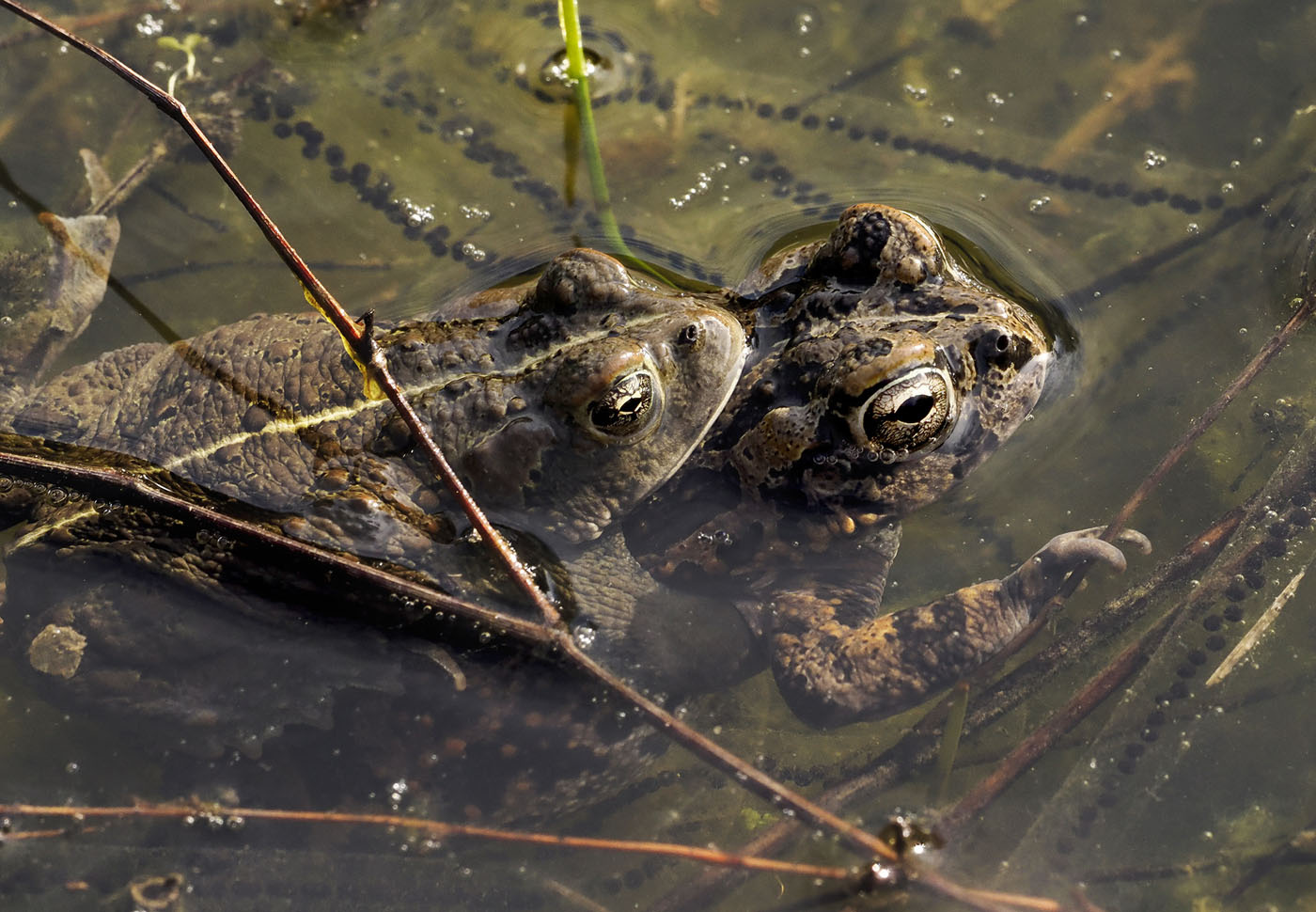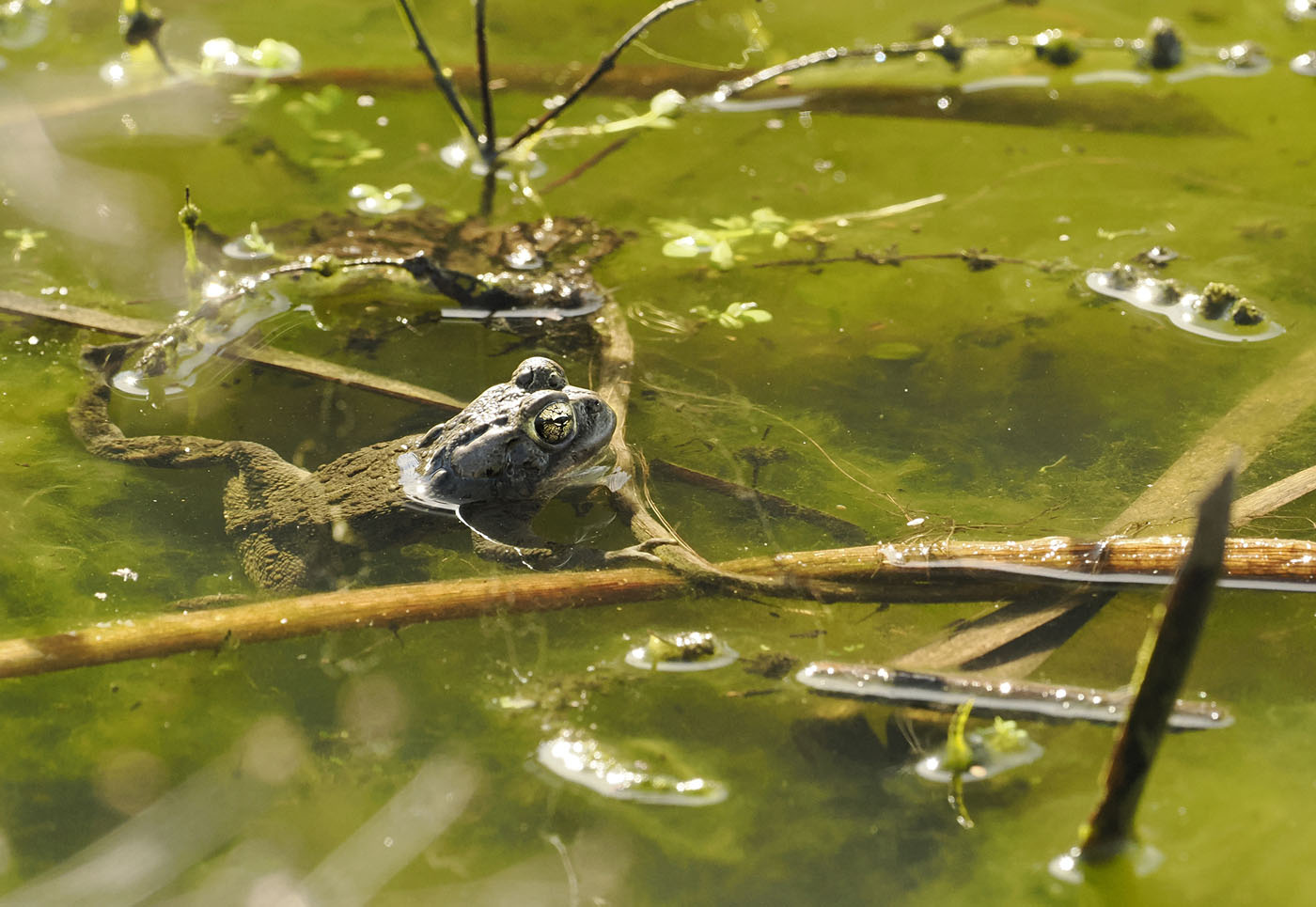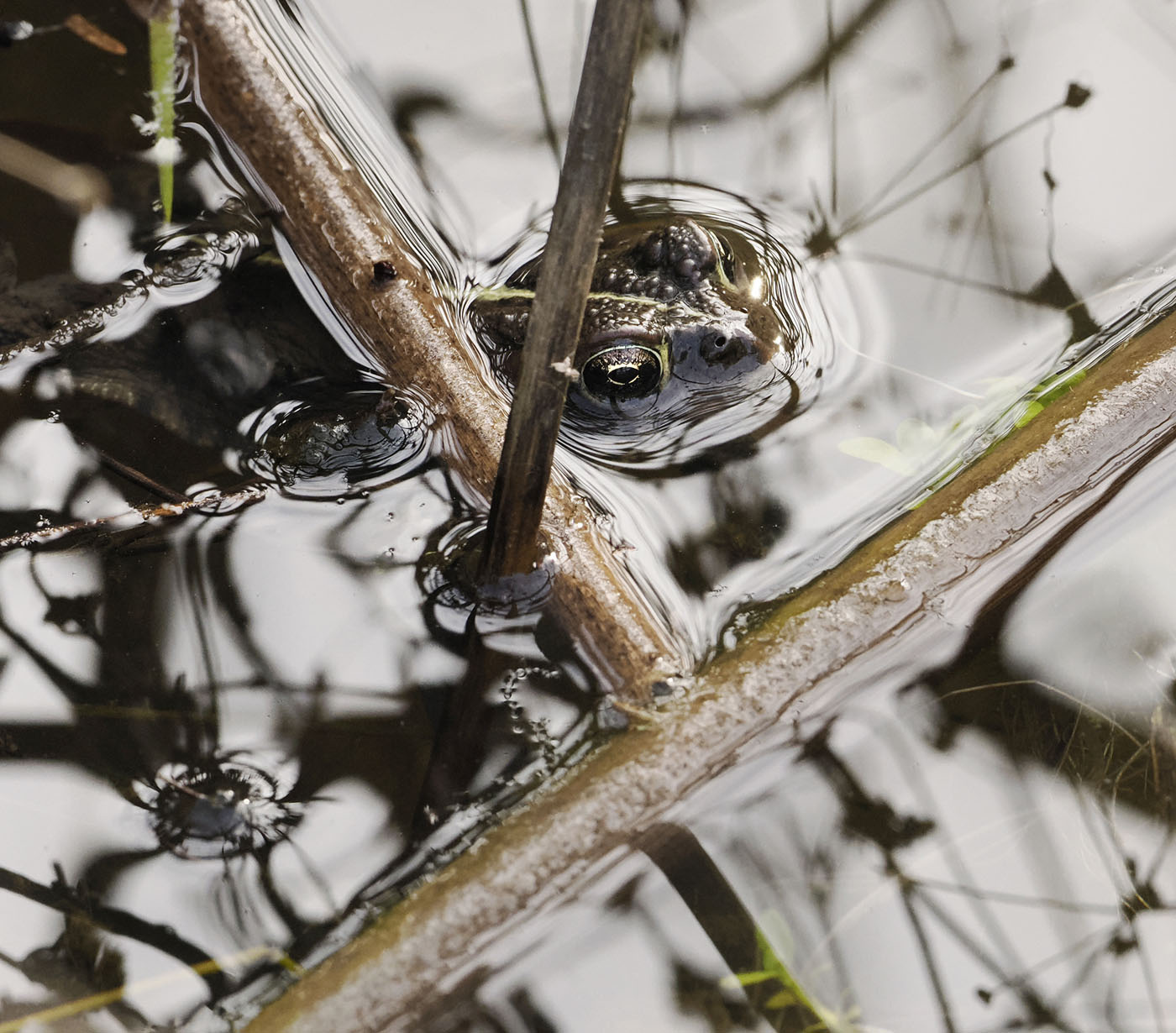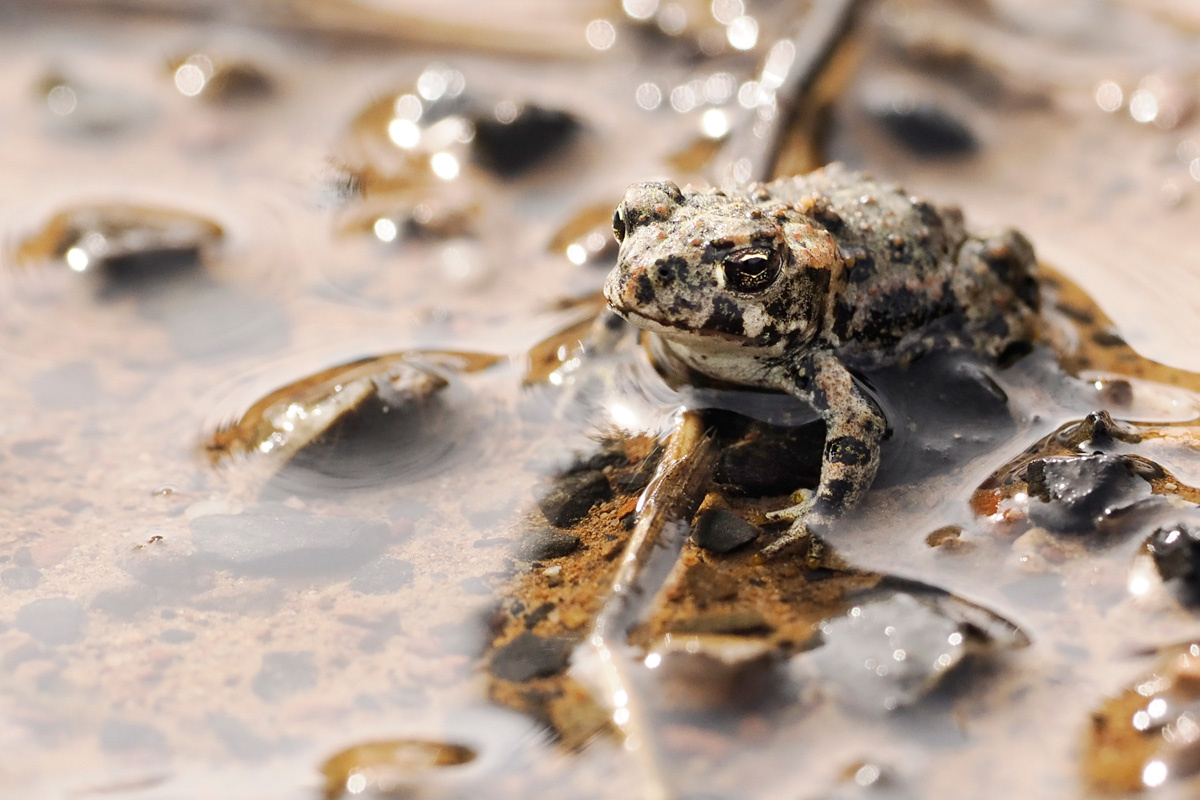From "Smoke My Toad" to Saving Them: A Bio Nerd's Toadally Different Path
Shortly after moving to California, back in 1999, I was walking down the sidewalk in Berkeley and a voice from behind me asked, ‘hey, are you that biology nerd from Indiana?’ Slowly I turned to see a woman that I had known in what seemed like another life. I laughed and said, yes, I am that biology nerd, but no one here knows that. Her name is Luna now, but I had known her back in high school as Becky. We actually took horseback riding lessons together (which she likely didn’t remember), but what did register for her about me was that I was a year behind her and was one of the only students who took AP biology and gained college credit for it before I was old enough to get my driver’s license. Or maybe it was because of my giant toad. Either way, she was right. I was that biology nerd from Indiana.

Image by Jen Waicukauski in Indian Valley, Novato, using the OM System OM-1 Mirrorless Camera with M.Zuiko 300mm PRO lens and Promaster HGX Prime Circular Polarizer.
Growing up I spent the majority of my time outdoors, mostly in the creek, turning over rocks to see what creatures might be hiding there. I never tired of exploring for animals (preferably amphibians and reptiles), often times bringing them home in buckets. When I was nine years old, I ordered a giant toad from my local pet store. At that time, they were called ‘mouse-eating toads’, and the folks at the pet store knew me well (it was kind of my favorite shop in the world after all), so when I said I definitely wanted a giant toad from South America, they got one for me. Had they known how large the toad would turn out to be, they probably wouldn’t have sold it. My toad was bigger than the one in the Guinness Book of World Records, measuring over 11 inches from the tip of her nose to the end of her tail bone. With her legs outstretched she was nearly two feet long. I named her Teddy, because she was as big as my teddy bear and I could dress her up in my teddy bear’s clothes. I LOVED that toad.

Image by Jen Waicukauski in Indian Valley, Novato, using the OM System OM-1 Mirrorless Camera with M.Zuiko 300mm PRO lens and Promaster HGX Prime Circular Polarizer
Teddy and I were featured in the local paper, a story still remembered by some Hoosiers to this day. We were quite the twosome. She was with me through most of high school which is when kids started asking if they could ‘smoke my toad’. My fabulous companion creature was technically known as a Bufo Marinus, commonly called a Cane Toad. Indigenous tribes in South America would dry out their toxic skins and smoke them for the hallucinogenic effects. Obviously, this was my toad’s most interesting characteristic to my high school classmates. Cane Toads currently are known as an invasive species and a cautionary tale that resulted in what I consider to be the best documentary ever made, ‘Cane Toads, an Unnatural History’, 1988.

Image by Jen Waicukauski in Indian Valley, Novato, using the OM System OM-1 Mirrorless Camera with M.Zuiko 300mm PRO lens
After receiving my naturalist certificate this past fall, I have had the opportunity to learn more about local restoration projects and efforts to save habitat for creatures in decline… so when I heard about a toad project, I was all in. I am officially part of the Cal Toad Crew. Toads everywhere are experiencing declining numbers. The California Toad is no exception.

Image by Jen Waicukauski in Indian Valley, Novato, using the OM System OM-1 Mirrorless Camera with M.Zuiko 300mm PRO lens
We are incredibly lucky to have the reproductive migration of multiple amphibious species so close and now in protected ponds that we can visit. Situated alongside a very well-traveled trail in Indian Valley (Novato, CA) you can meet up with fellow amphibian enthusiasts and see if you can spot some of the little creatures making all the noise from just a few feet away, beyond a simple and low fence before you head further out for a beautiful hike to a waterfall or as you take your dog out for a jaunty trek in the woods or bring along your camera and binoculars to spot some of the local birds and other wildlife that occupy this space year round. This spot is unique because not only is it the one saved habitat in this area where these incredible animals reproduce each year, but also because it is so accessible for humans to enjoy and respectfully observe them in their natural habitat.

Image by Jen Waicukauski in Indian Valley, Novato, using the OM System OM-1 Mirrorless Camera with M.Zuiko 300mm PRO lens and Promaster HGX Prime Circular Polarizer
Before the baseball field was built at College of Marin, the entire area used to be seasonal ponds providing a much larger area for the reproductive migration of the native amphibians. These few small ponds (which also include a large puddle not yet fenced off along the east side of the trail which is currently teeming with toxic tadpoles… please keep your dogs out to keep our canines safe and the amphibians undisturbed) are all that is left. The sheer number of frogs, toads and newts that occupy this space can be deafening when the chorus frogs really start their chatter and the water becomes dense with eggs and tadpoles soon alongside the frogs and toads in amplexus, while newts pop up frequently for a quick breath of air before shimmying back below the surface in search of food. It really is a fantastic place to see nature at work, up close.

Image by Jen Waicukauski in Indian Valley, Novato, using the OM System OM-1 Mirrorless Camera with M.Zuiko 300mm PRO lens and Promaster HGX Prime Circular Polarizer
Today, I look back on my childhood fascination with both nostalgia and sadness. Teddy was an incredible piece of my story. Teddy was also, almost certainly, a product of animal trafficking AND a perfect example of how invasive species are often times products of human selfishness and stupidity. When I think back on all those days spent in the creek flipping over rocks and looking for creatures, I now see those moments through the eyes of someone who knows better than to be so disruptive to the ever-shrinking habitats of the creatures of this planet. One of the reasons that I have become so obsessed with taking pictures of the natural world is that I can satisfy my curiosity about creatures without having to interrupt their natural processes and existence. I’ve done quite enough already to disrupt the creatures of this world. The more I can share what is amazing about them and learn for myself without causing harm, the better.

Image by Jen Waicukauski in Indian Valley, Novato, using the OM System OM-1 Mirrorless Camera with M.Zuiko 300mm PRO lens
I’m incredibly happy to say that I now have toads back in my life again. I can’t take back what harm I may have caused Teddy and whatever other creatures whose lives I literally turned upside down, but hopefully I can do some good for the California Toads and their buddies, the California Newts and the Pacific Chorus Frogs, now that I know how to show my love in a way that can actually help them. Life is a learning experience and I think some of the most important stories we can share are the ones where we made bad decisions because we didn’t know better. And, when we gain new insight, we have the opportunity to change our minds and our habits to make better choices for a future that needs us to see beyond ourselves.








